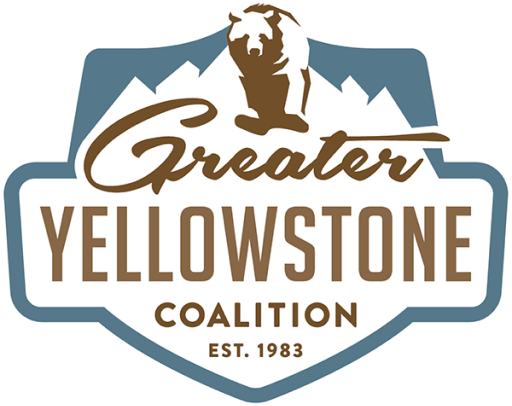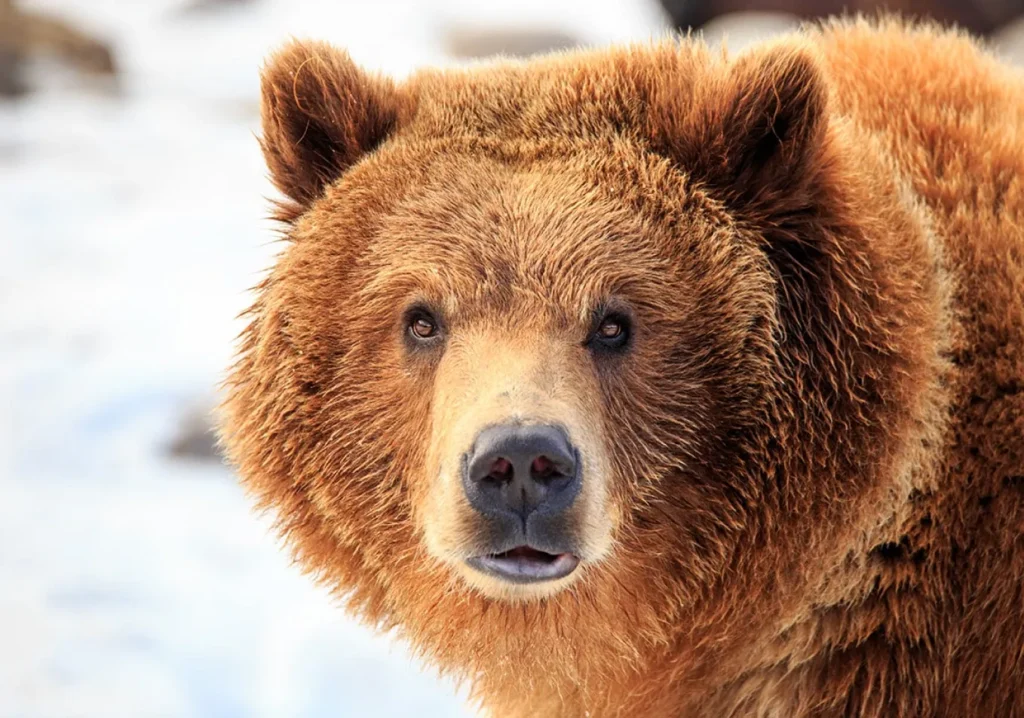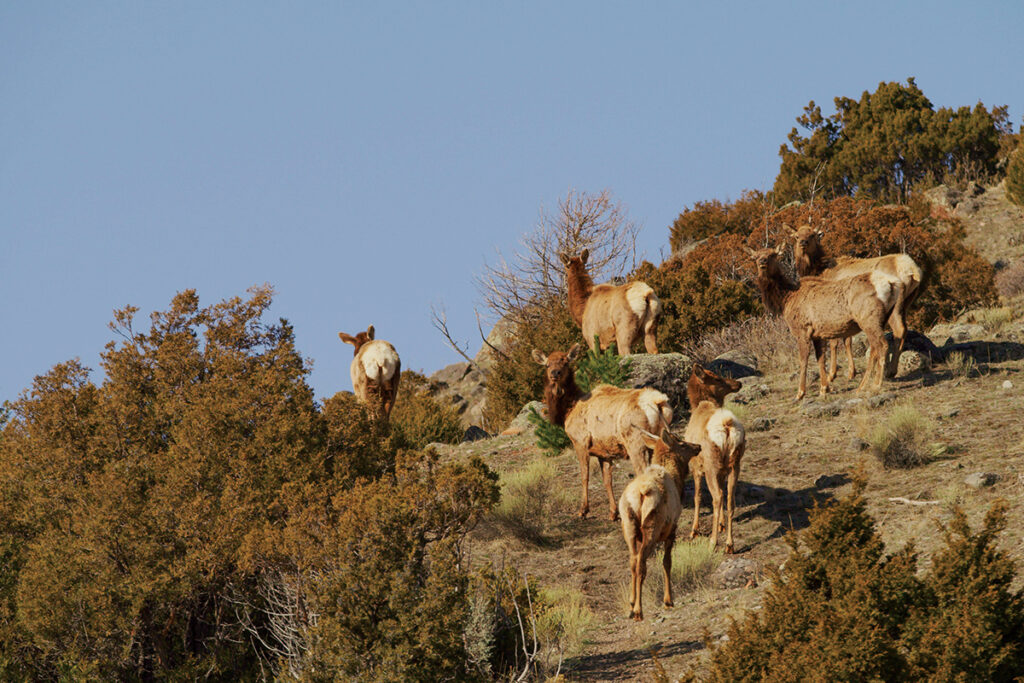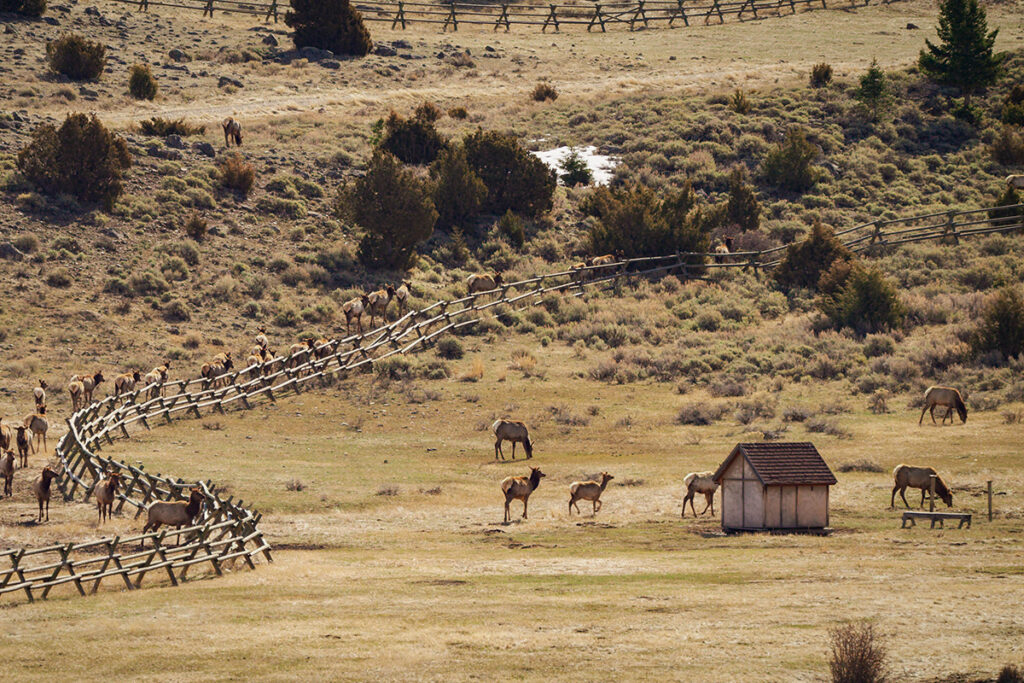Innovation Lab
Paradise Valley Fence Fund
Expanding wildlife-friendly fencing and conservation practices outside of Yellowstone National Park

overview
Supporting ranchers and wildlife
PERC’s privately funded Paradise Valley Fence Fund assists ranchers in the working lands outside Yellowstone National Park in maintaining fencing damaged by wildlife, adopting wildlife-friendly fencing, while supporting the migration of the Greater Yellowstone Ecosystem’s iconic elk herds and other wildlife.
Challenge
The private working lands of Paradise Valley provide essential habitat for the region’s wildlife, but providing this habitat comes at a cost.
Elk and grizzly bears are a particular challenge for the ranchers in Paradise Valley, located just north of Yellowstone National Park. Elk consume forage, spread disease, and damage infrastructure like fencing, and bears can depredate on livestock and injure humans.
In addition to these costs, ranchers face development pressure that threatens to subdivide the valley, a process that would choke off wildlife migration routes. Helping ranchers share the cost of living with wildlife is increasingly accepted as an important component of maintaining open space that serves as critical wildlife habitat.

Solution
Paradise Valley Fence Fund eligibility and payout structure
The Paradise Valley Fence Fund is a three-year pilot project initially capitalized at $50,000 to help ranchers pay for fence-related projects that protect migratory wildlife, prevent human-wildlife conflict, and support ranch operations.
It covers work such as installing new wildlife-friendly fences, fixing or replacing fences damaged by wildlife, promoting wildlife connectivity by keeping gates open during migratory periods, and fencing off areas that might attract predators, such as bone piles. Once a rancher’s application is accepted, the cost share program will cover approximately 30 to 50 percent of costs, with the rancher responsible for covering the rest.
To access the Fence Fund, there is no formal enrollment process and no payment is required from landowners. PERC offers three levels of support determined by the type and extent of repairs a landowner faces in wildlife-caused damage to fencing.
Eligibility:
- Operates a farm or ranch in the Paradise Valley.
- Documents the nature and location of fencing needs (e.g., photos/video/site visit).
- Participates in the meetings and activities of the Paradise Valley Working Lands Group (attending 1-2 meetings per year).
- Adheres to applicable rules associated with operating in the Montana Designated Surveillance Area (DSA), including any required vaccination, testing, and adherence to brucellosis management plans.
Payouts:
- Level 1. Basic Repairs: Fence owner undertakes basic fence repairs with total time and materials estimated at up to $2,500. Fence Fund support = $750.
- Level 2. Traditional Fence Replacement: The condition of landowner’s existing fence and wildlife-caused damage requires extensive repairs to one or more spans of fence with total time and materials estimated at up to $2,500. Fence Fund support = $750-$2,500.
- Level 3. Fence Conversion: Existing fence condition and location clearly impacted by wildlife requiring removal of existing fence and replacement with wildlife-friendly design to mitigate ongoing fence damage from wildlife. Total time and materials in excess of $10,000. Fence Fund support = $5,000.
“Paradise Valley is a rare treasure where stewardship for one of America’s greatest wildlife migrations falls to a small group of family-owned ranches. This groundbreaking program strengthens the vital partnership between the people who tend to open lands and the wildlife who depend upon it. This isn’t about fence construction; it’s about safeguarding a legacy where elk herds roam and working lands continue to sustain the wild heart of Montana.”
— Brian Yablonski, CEO, PERC
project partners
Conservation and community partners stepped up to fund the program.




A collaborative project
This fund is made possible by the generous support of partners including the Rocky Mountain Elk Foundation (RMEF), SITKA Gear, the Greater Yellowstone Coalition (GYC), and the Spruance Foundation. RMEF and SITKA are specifically contributing to wildlife-friendly fencing in the valley, while GYC is contributing to electric fencing costs. PERC and the Spruance Foundation are supporting the entire program.

Support Creative Conservation
PERC is pioneering creative new approaches to protect land, water, and wildlife. Donate now to help expand new frontiers in conservation.


